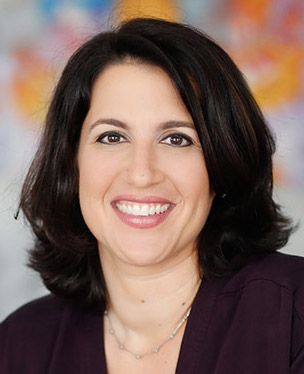Blog
Article
The burnout paradox: How addressing SDOH can reduce provider stress
Author(s):
Solutions involving social determinants of health may seem counterintuitive, but they can be effective.
© STOATPHOTO - stock.adobe.com

A 2023 Medical Economics® report found that over the course of their careers, 92% of physicians have experienced burnout. In addition, 62% of providers currently feel burned out. The American Medical Association officially defines burnout as including a reduced sense of personal achievement, emotional exhaustion and a sense of depersonalization, having less empathy toward patients in their care.
Several factors contribute to provider burnout, such as increased work hours as well as additional bureaucratic and administrative work. Other variables that can further exacerbate feelings of stress include a lack of leadership support, an augmented focus on productivity, and disparities in individual and organizational value alignment.
Hillit Meidar-Alfi, PhD
Spatially Health

Organizations owe it to their physicians and other clinicians — and the patients they serve — to implement changes to counteract provider burnout. Although some effective solutions may seem counterintuitive, they are worth exploring.
The SDOH paradox
Consider social determinants of health (SDOH). With the U.S. Centers for Medicare & Medicaid Services requiring Accountable Care Organization (ACO) Realizing Equity, Access and Community Health (REACH) groups to show the efficacy of their health equity plans this year, some providers may initially see addressing SDOH as just one more straw breaking the camel’s back rather than an opportunity to reduce provider stress.
However, addressing SDOH thoughtfully — especially in value-based care models — has the potential to decrease the burden on providers, minimizing the risk of burnout. Traditional sources of provider stress in value-based care include administrative burdens, high patient loads and inadequate resources. With these factors in mind, tackling SDOH in value-based care models could move the needle in the right direction to decrease provider burnout.
Here’s how that could work in practice.
Improve patient outcomes, lessen provider stress
Addressing SDOH can lead to better patient outcomes, which in turn can not only increase provider satisfaction but also can lower their stress. SDOH risks impact patient health. A person without reliable transportation will miss medical appointments. A diabetic living in a food swamp and with restricted access to healthy food options may have higher glucose numbers. Treatment plans that account for the underlying social issues affecting patients prove more effective.
In addition, treatment protocols that consider SDOH often see improved patient adherence to the treatment, leading to better clinical results. For instance, if the previous diabetic patient received medically tailored meals, they could have an easier time making glucose-friendly choices.
Further, treatment protocols that incorporate SDOH have the added benefit of reducing patient frustration and improving communication, which can enhance the patient-provider relationship. Consider the patient without reliable transportation: Offering virtual appointments when possible could increase attendance and help the patient and provider collaborate.
In this regard, there is opportunity to promote patient engagement and empowerment as key components of successful SDOH interventions, which can lead to less of a burden on providers.
Actionable solutions and interventions
To complement patient involvement, ACOs can implement specific strategies to support providers in addressing SDOH effectively. For example, groups can integrate social workers and community health workers into care teams, distributing the workload beyond the provider’s shoulders. Also, risk-bearing organizations can consider using technology and tools for SDOH screening and resource referral to take some tasks off providers’ plates. For example, some technology not only flags a given patient’s SDOH risk factors but also can give targeted intervention recommendations for that patient based on their unique social risks. Incorporating platforms like this can support providers and combat burnout.
Additionally, groups can streamline workflows and reduce administrative burden on providers through leveraging technology solutions. Further, providing training and support on SDOH interventions and communication skills will go a long way to continue to combat provider burnout.
Healthy providers, healthier patients
Ultimately, tackling SDOH is not just about patient care but also about improving provider well-being and creating a more sustainable health care system. As groups implement tools and make changes to support providers and combat burnout, consideration of SDOH proves key. Stakeholders have an opportunity to make an impact, as investing in addressing SDOH offers a measurable way to improve both the patient and provider experience.
Hillit Meidar-Alfi, PhD, is the CEO and founder of Spatially Health, a company that offers dynamic, customized SDOH analytics tech to ACOs. Complementing her expertise in spatial analytics, Dr. Meidar-Alfi has a background in city planning and architecture.





